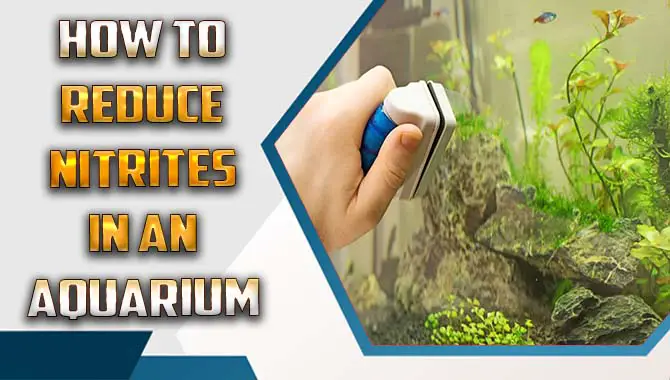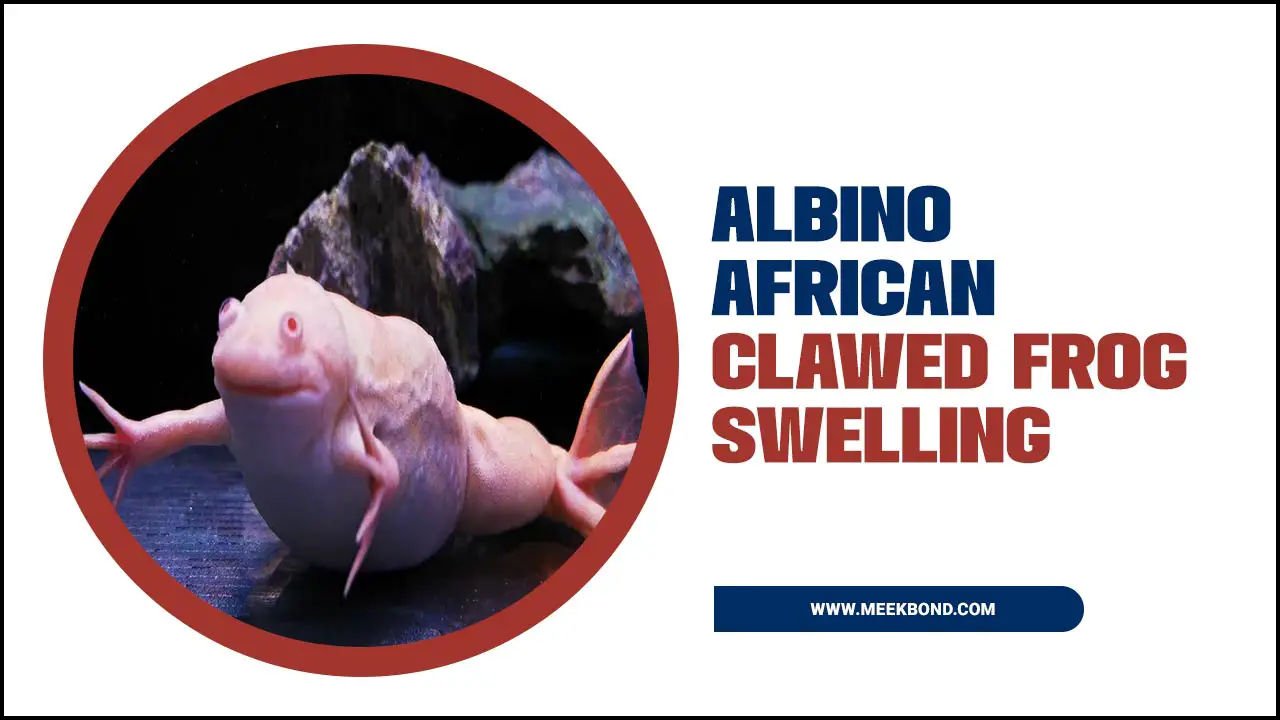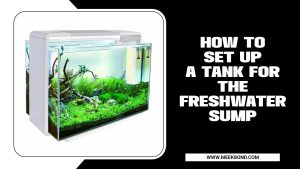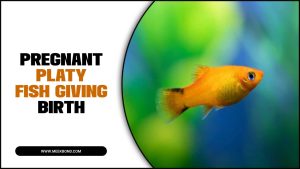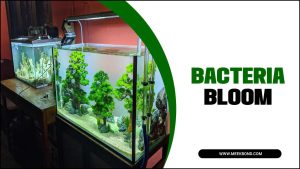An aquarium is a fascinating and beautiful way to bring aquatic life into your home or office. With its peaceful ambience and mesmerizing fish, an aquarium can provide a calming escape from the stresses of daily life.
When setting up an aquarium, there are several key factors to consider, such as the size of the tank, the type of filtration system needed, and the types of fish and plants you want to include. If you’ve recently lost any fish in your aquarium, then you know that cleaning it can be a daunting task. We will help you clean your aquarium after the fish dies, from start to finish.
We will show below How to clean aquarium after fish died. When fish die in an aquarium, it’s important to take immediate action to prevent the tank from becoming contaminated.
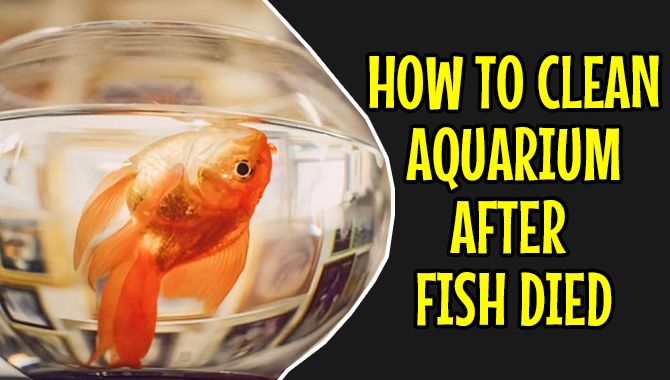
Fish Food Poisoning In Aquariums: Symptoms, Causes, And Treatment
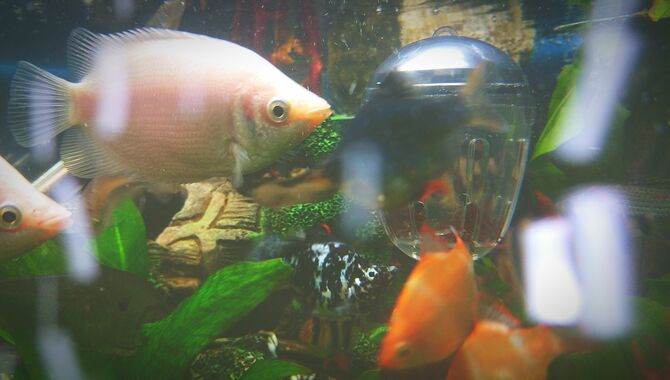
Fish food poisoning is a problem that can afflict fish in aquariums. The fish might exhibit signs of distress, such as watery eyes or an unwillingness to eat. Bacteria cause fish food poisoning and often result from feeding the fish improperly stored or contaminated food.
Fish food poisoning can be a serious issue for aquarium owners. Symptoms of fish food poisoning in aquariums can include lethargy, loss of appetite, abnormal swimming behaviour, and discolouration. The most common causes of fish food poisoning are overfeeding or using expired or contaminated food.
Causes:
There are a few main causes of fish food poisoning in aquariums. Poor water quality can cause bacteria to grow and form toxins that can attack fish tissues. Improper storage or handling of food can also lead to contamination. Finally, feeder fish may infect with parasites or bacteria that can cause the fish in an aquarium to get sick.
To help prevent fish food poisoning, keeping your tank clean and well-stocked with fresh water and nutritious foods is important. Regular tank cleaning will also help remove any potential contaminants that might cause a problem. If your fish get sick from food poisoning, you may need to take them to a veterinarian.
Symptoms:
Fish food poisoning in aquariums can be a serious issue for fish and their owners. It is important to handle fish food carefully and ensure it is stored properly to prevent contamination. If you suspect that your fish have been affected by contaminated food or if you are experiencing symptoms after handling fish food, it is important to seek medical attention or veterinary care immediately. Some common symptoms are:
- -Watery eyes
- -Unwillingness to eat
- -Loss of appetite
- -Swollen gills or fish gasping for air
- -Poor colour in fish
- -Rotting or black spots on fish scales
Treatment:
If you suspect your fish have been poisoned by their food, it is important to take action quickly to prevent further harm. The first step is to stop feeding them the contaminated food and remove any uneaten portions from the tank. Depending on the severity of the poisoning, you may need to administer medication or seek veterinary care for your fish. You can also try treating the aquarium water with activated carbon or other chemical treatments to help remove toxins.
- -Remove all dead or sick fish from the aquarium.
- -Clean and rinse the tank and gravel thoroughly.
- -Add fresh water to replace lost water, then add new food. Feeder fish should be cleaned feeders as well.
How To Clean Aquarium After Fish Died-Follow The Steps Below
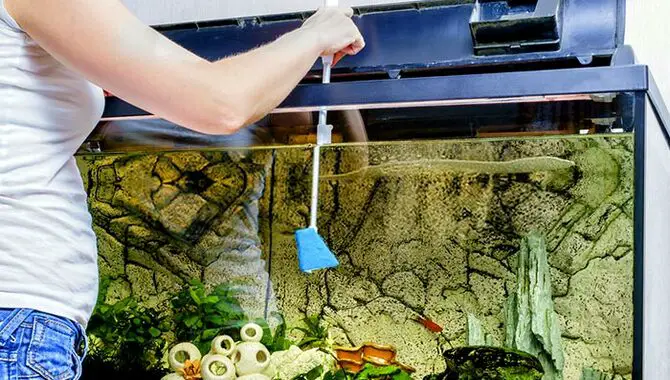
Fish die and need to dispose of respectfully. Losing a fish can be a sad and difficult experience for aquarium owners. Once a fish has died, it is important to clean the aquarium properly to prevent any remaining bacteria from harming other fish or aquatic life. By following these steps, you can ensure that your aquarium remains clean and healthy for your remaining aquatic life. Here are some steps to follow when cleaning an aquarium after a fish has died:
1. Remove the dead fish and any debris from the tank using a net or scoop.
2. Turn off all electrical equipment, such as filters and heaters, and unplug them from the power source.
3. Drain water from the tank while carefully not disturbing any remaining aquatic life or plants.
4. Remove any decorations, plants or substrate the dead fish have contaminated.
5. Clean all tank surfaces with warm water and scrub with a non-toxic cleanser if necessary.
6. Rinse everything thoroughly with fresh water before refilling the tank.
7. Reinstall all electrical equipment and decorations before refilling the tank with water treated with appropriate chemicals and at the correct temperature for your aquatic life.
If you’re unfortunate enough to lose fish, make sure to follow these steps to clean the aquarium after the fish dies:
- Remove all dead and sick fish from the aquarium
- Clean and rinse the tank and gravel thoroughly
- Add fresh water to replace lost water, then add new food for feeder fish
- Monitor fish for signs of disease
What To Do When Fish Die In The Aquarium
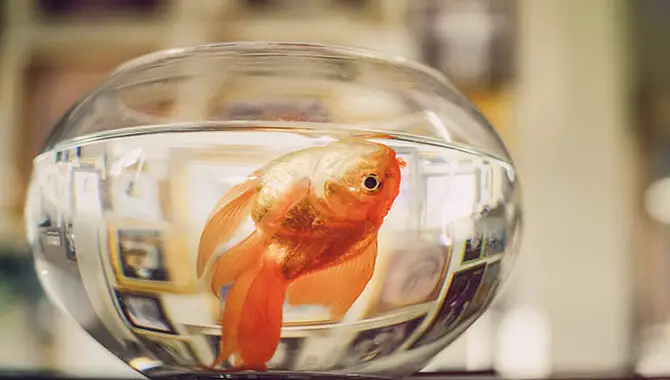
When a fish dies in your aquarium, it’s important to take action quickly to prevent further issues. The first step is to remove the dead fish from the tank and dispose of it properly. If you have other fish in the tank, it’s important to monitor them closely for any signs of illness or stress, as a dead fish can release harmful toxins into the water that could affect the other fish.
Next, you’ll want to test the water parameters in your tank to ensure that they are within safe levels for your remaining fish. You may need to do a partial water change or adjust your filtration system if necessary.
It’s also a good idea to inspect your aquarium for any signs of disease or parasites that could have caused the death of your fish. Ensure you maintain proper hygiene when cleaning your aquarium and feeding your fish, which can help prevent future issues.
Finally, take some time to reflect on what might have caused the death of your fish and make any necessary changes to prevent similar issues in the future. Remember that keeping an aquarium requires diligence and attention to detail, but with proper care and maintenance, you can enjoy a thriving aquatic environment for many years.
Why Is It Important To Clean An Aquarium After Fish Die?
If your tank contains live fish, it’s important to clean it as soon as possible so the fish don’t become contaminated. Dead fish and water residue can easily cause diseases in your tank, killing your fish. Additionally, dead fish left in an aquarium can also attract strong nuisances like rats or spiders, which is not something you want.
Cleaning an aquarium after a fish dies is crucial for maintaining the health and well-being of the other fish in the tank. When a fish dies, it decomposes, releasing harmful bacteria and toxins into the water. These can quickly spread to other fish in the tank, potentially causing illness or death.
Additionally, a buildup of decaying matter can lead to poor water quality, which can negatively impact the overall health of the aquarium ecosystem. By promptly removing any dead fish and thoroughly cleaning the tank, you can help prevent these issues and ensure your remaining fish stay healthy and happy.
How To Treat Water Parameters Problems In Tank Fish Tanks?
Maintaining proper water parameters is crucial for the health and well-being of fish in a tank. If you notice any issues with your water parameters, such as high ammonia or nitrite levels, it is important to take action immediately.
The first step in treating water parameter problems is to test the water and identify the issue. Once you have identified the problem, there are several steps you can take to correct it. For example, if ammonia levels are high, you can change partial water and add an ammonia-removing product.
There are many water parameters fish tanks can experience. The following is a list of the most common problems and how to treat them:
Low dissolved oxygen levels (DO): Add an air stone or bubbler to the tank and change 75% of the water daily for three days. If levels remain low after treatment with aeration, adding a supplemental aquarium fish filter may be necessary.
High nitrite levels: Change 50% of the tank’s water every two weeks and then the ammonia level if needed; this will help rid your aquarium of harmful nitrates.
High nitrate levels: Add a water conditioner to the tank and change 50% of the tank’s water every two weeks.
A Kit For Aquarium Co2 Diffusion Systems Setup And Maintenance
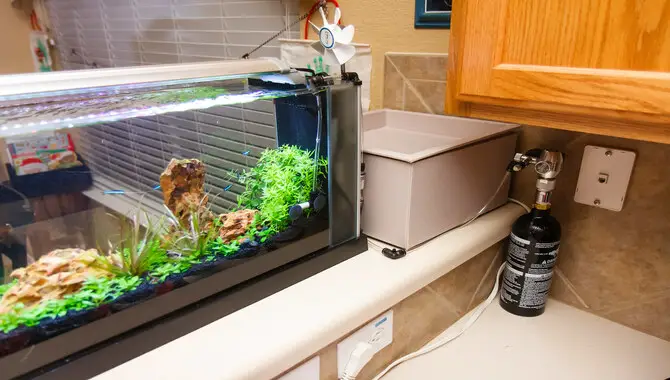
If you want to set up a Co2 diffusion system in your aquarium, a kit can be a great investment. A good kit will include all the necessary components for setting up and maintaining your system, including a regulator, tubing, and diffuser. The regulator is responsible for controlling the flow of Co2 into the tank, while the diffuser helps to distribute it evenly throughout the water.
This can help to promote healthy plant growth and improve the overall health of your aquarium ecosystem. Additionally, many kits come with instructions for setup and maintenance, making it easy for even beginners to get started with their Co2 diffusion system. So, if you want to take your aquarium game to the next level, consider investing in a Co2 diffusion kit today.
This aquarium cleaning kit is for aquariums with CO2 diffusion systems. This kit includes:
- One fish tank scrubber brush
- Aquarium cleaner (see instructions below)
- Two fish tank water change filters
- Aquarium gravel filter media (optional)
Instructions For Using The Fish Tank Scrubber Brush:
When setting up and maintaining an aquarium CO2 diffusion system, it is important to have the right tools. One essential tool is a fish tank scrubber brush, which can be used to clean the diffuser and other components of the system. When it comes to maintaining your aquarium CO2 diffusion system, the fish tank scrubber brush is an essential tool. Here are some instructions for using it effectively:
- Add aquarium cleaner to the fish tank and soak bristles in the solution for 10 minutes.
- Remove water-soaked bristles from the fish tank and rinse with clean water. Hang wet bristle brushes on a nearby hanger to dry completely before the next use.
Instructions For Using The Fish Tank Water Change Filters:
Regarding maintaining a healthy and thriving aquarium, proper CO2 diffusion is crucial. That’s why having a kit for aquarium CO2 diffusion systems setup and maintenance is so important. One key component of this kit is the fish tank water change filters. Adding a fish tank water conditioner may be necessary if nitrate or nitrite levels remain high. Here are some instructions for using them:
- Place one filter in the bottom of the fish tank and connect it to the power supply.
- Add gravel or other aquarium filtration material to the top of the filter if desired.
- Carefully pour new water into the fish tank until it reaches the top of the filter, then turn off the power supply.
- Remove the filter and rinse with clean water.
- Hang the wet filter on a nearby hanger to dry completely before the next use.
The Basics Of Aquarium Fish Care
Taking care of aquarium fish can be a rewarding experience but requires a certain level of knowledge and dedication. One important factor to consider is water quality. Aquariums need to have clean, well-filtered water in order for fish to thrive. It’s also important to feed the fish a balanced diet and provide them with adequate space and hiding places. Here are some basics of aquarium fish care to keep in mind:
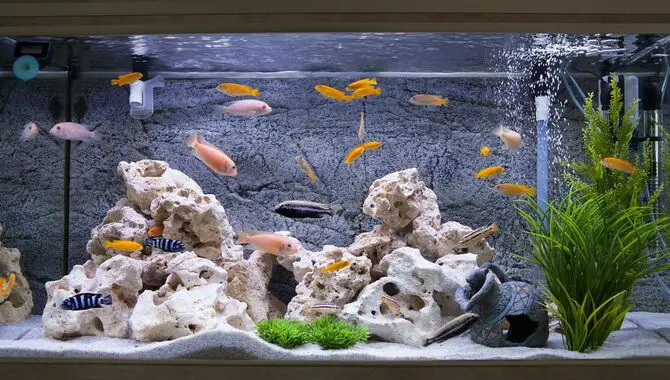
1. Aquarium fish care is important for two reasons: keeping the fish healthy and enjoying their environment. Here are some tips to help you keep your aquarium fish healthy:
2. Establish good tank water chemistry. Aquarium water must have balanced nutrients for the fish to survive and thrive. This can achieve by using a quality aquarium filter, adding gravel or other decorations, or changing 50% of the tank’s water every two weeks.
3. Feed your fish enough food that they can comfortably eat in one sitting. Overfeeding will cause excess wastes to accumulate, which can be toxic to the fish.
4. Keep your tank clean and free of debris, algae, and other pollutants. Aquarium fish are sensitive to dirty water, so keep the tank sparkling clean by occasionally cleaning it with an aquarium cleaner or filter cleanser.
5. Do not overheat or nitrate if you tank water. Regularly checking water temperature and keeping it within a healthy range is crucial for aquarium fish health.
Handle fish carefully- avoid touching their scales and gills, and do not put them in cold or too-hot water. Aquarium fish are prey animals, so being handled roughly can cause stress and predators such as cats to target them.
6. Take good care of your fish tank plants- these are essential for providing cover, beauty, and nutrients to the fish. Some aquarists let their aquarium plants grow naturally; others take the extra step of planting them in waterlogged gravel or kitty litter before adding them to the tank.
Conclusion
Losing a fish can be a sad and difficult experience for any aquarium owner. Still, it is important to clean the tank properly in order to prevent further harm to any remaining aquatic life. The first step is removing dead fish or debris from the tank, then thoroughly cleaning the aquarium with warm water and vinegar. Replacing any filter media and performing a partial water change to improve water quality is also recommended.
Fish die in aquariums, and cleaning the tank can be difficult after they die. We have provided a step-by-step guide on how to clean an aquarium after fish die. Read through the guide carefully and follow the instructions to the letter to ensure a clean tank.
Additionally, we have included tips on fish care and tank sanitation, which will help you keep your tank healthy and parasite-free. Don’t forget to share this blog post with your friends and family to help them clean their aquariums.
Frequently Asked Questions
Should I Use Salt Or Chlorine To Clean My Aquarium?
Many people use salt to clean their aquariums because it is the most effective way to eliminate bacterial and fungal growth. Chlorine should only be used when fish die, as it is the most effective way to eliminate bacterial and fungal growth.
What Are Some Hazards Of Cleaning An Aquarium With Fish Still In It?
Cleaning an aquarium with fish still in it can be quite hazardous. Here are some potential hazards: – Fish blood can irritate the skin and eyes, leading to fish poisoning. In extreme cases, fish poisoning can even lead to death. – Dead fish can also release unpleasant smells that may contaminate your aquarium water or plants.
It’s important to use safe and effective cleaning methods when cleaning an aquarium after fish die to avoid these problems.
Can I Use Salt Water To Clean My Aquarium?
You should not use salt water to clean your aquarium as it can damage the fish and plants. The best way to clean your aquarium is by using a good algae cleaner and warm water.
What Is The Safest Way To Dispose Of Dead Fish In An Aquarium?
The safest way to dispose of dead fish in an aquarium is by using a tank cleaner. Fish tank cleaners use special detergents and enzymes to clean and deodorize your aquarium, killing any bacteria and parasites that may be attached to the fish. In addition, fish tank cleaners help remove debris, algae, and dead fish, making your tank water crystal clear again.
What Are The Best Ways To Clean An Aquarium After Fish Die?
When fish die in an aquarium, the most important thing is to get the tank water clean and free of all debris. After that, use a white vinegar solution (1 cup of vinegar for every 5 gallons of water) to help sanitize the tank. This will kill bacteria or other microorganisms and ensure the tank is safe for new fish to add.
Next, remove all dead fish, algae, and plants from the aquarium using a net or scoop. This will help clear out everything so you can start fresh with new fish. Finally, wait two weeks before you try to add any other fish.

Aquarium passion is all about connecting with the aquatic life and providing education to the public on the importance of these creatures. We showcase a wide variety of marine life through our exhibits as well as working with schools to provide unique learning opportunities for students of all ages.

